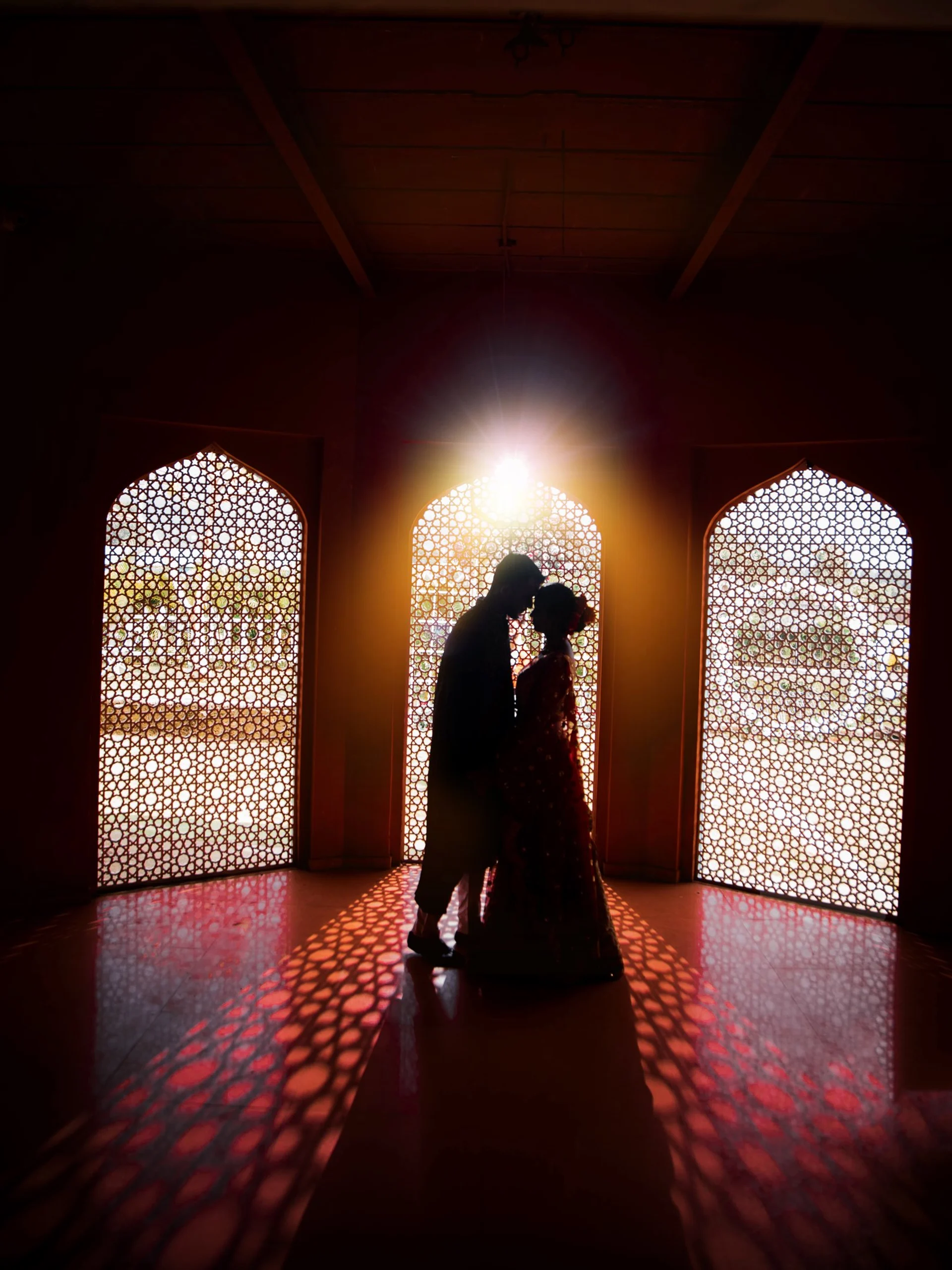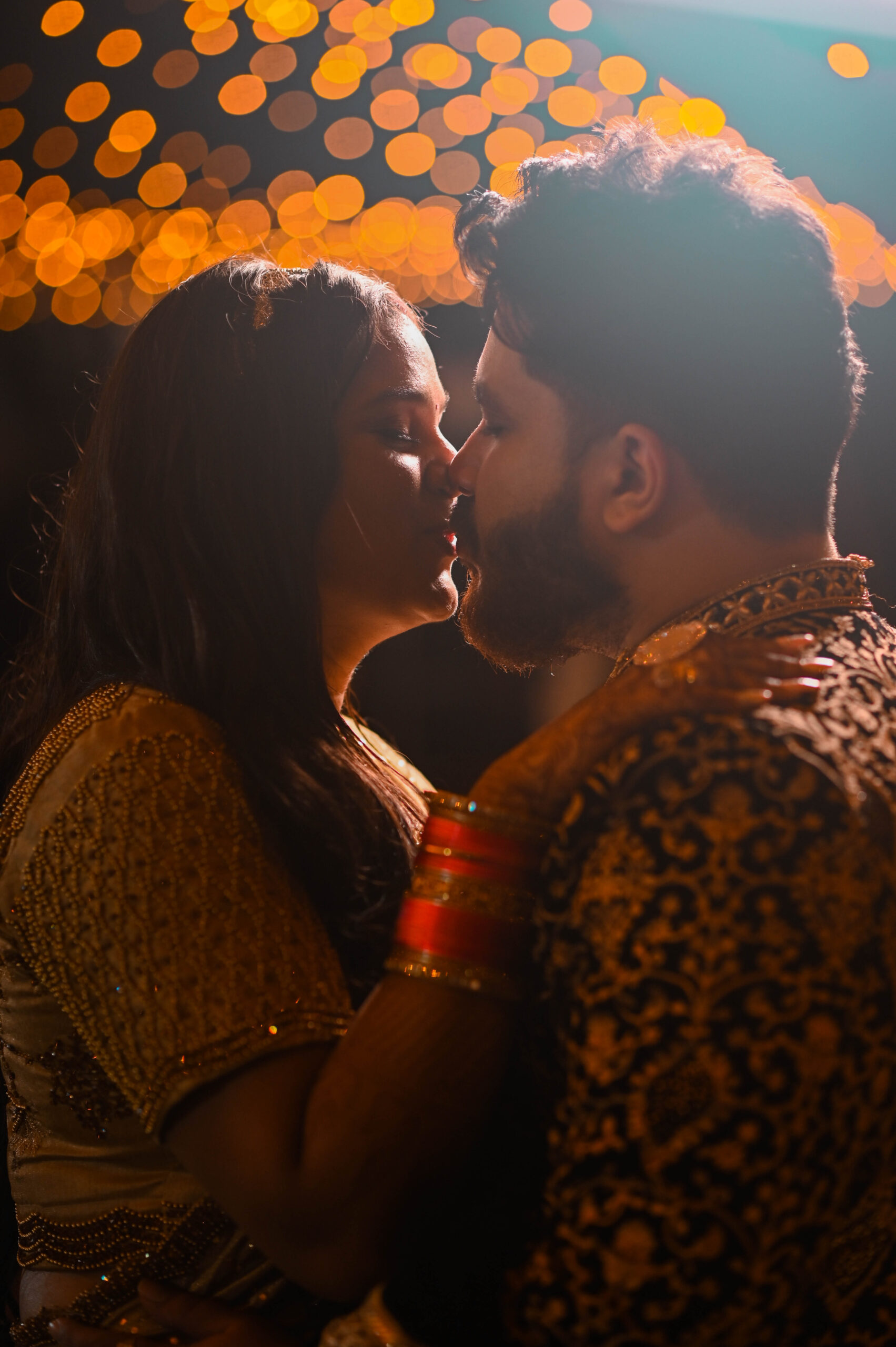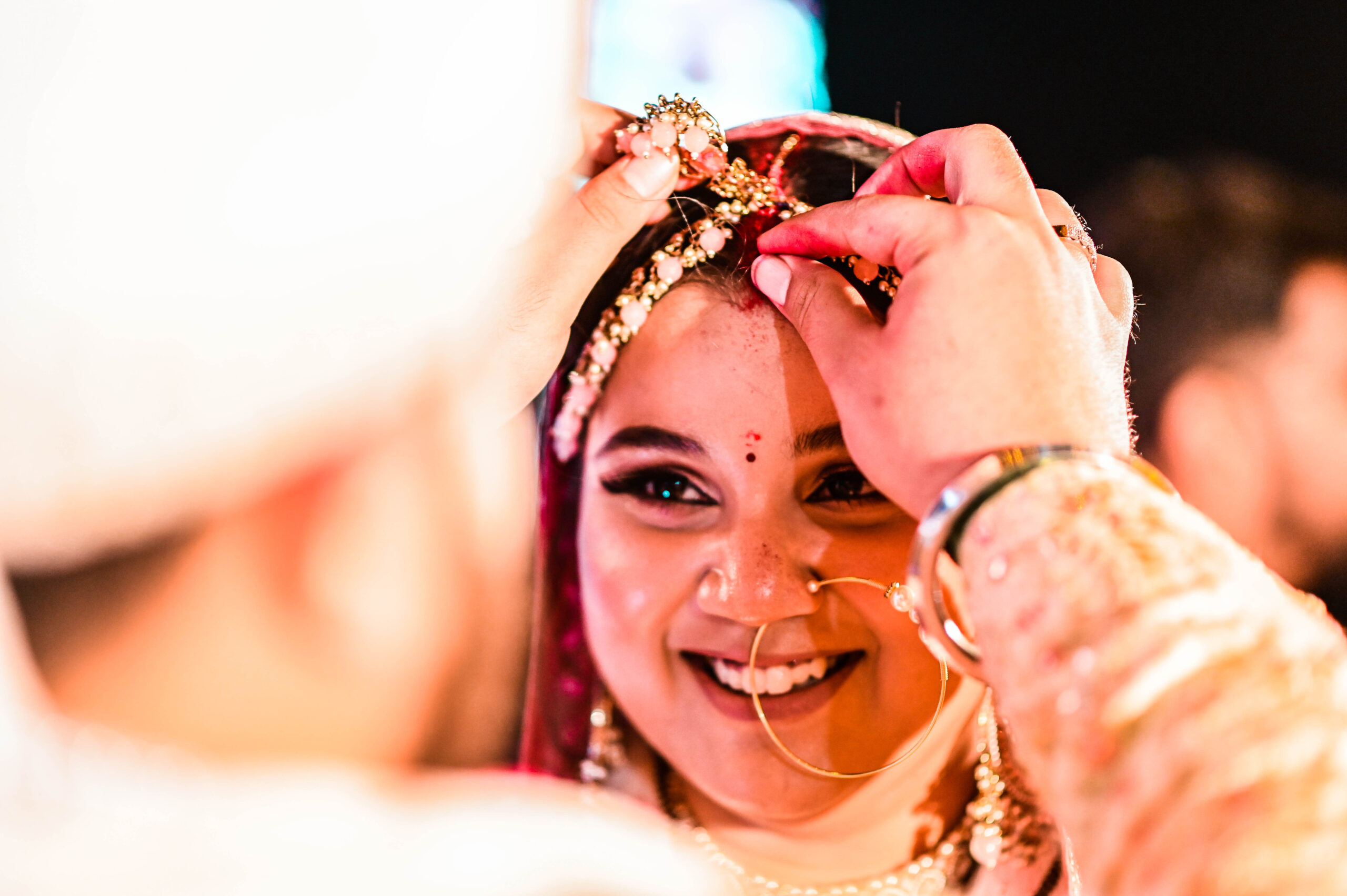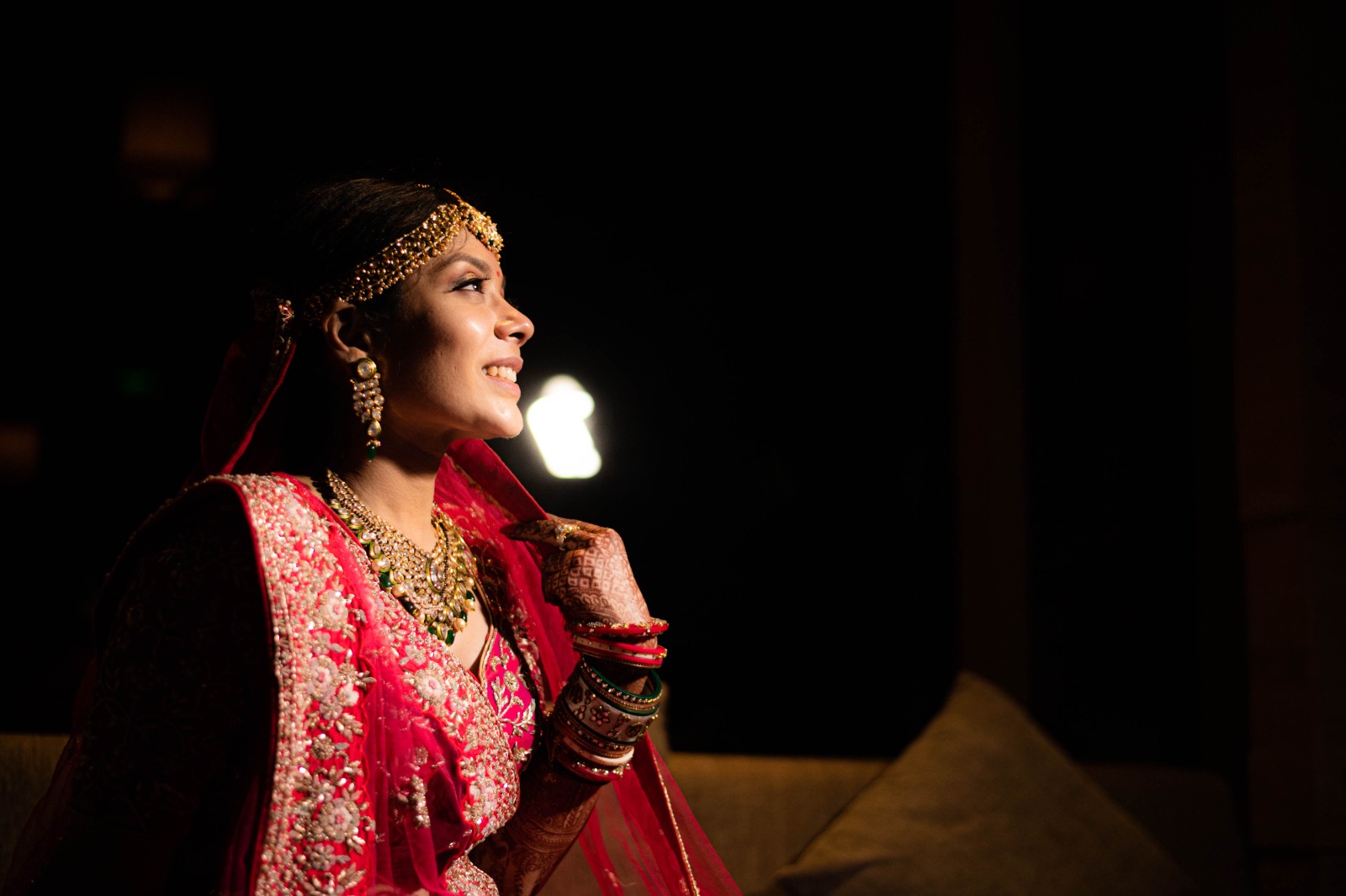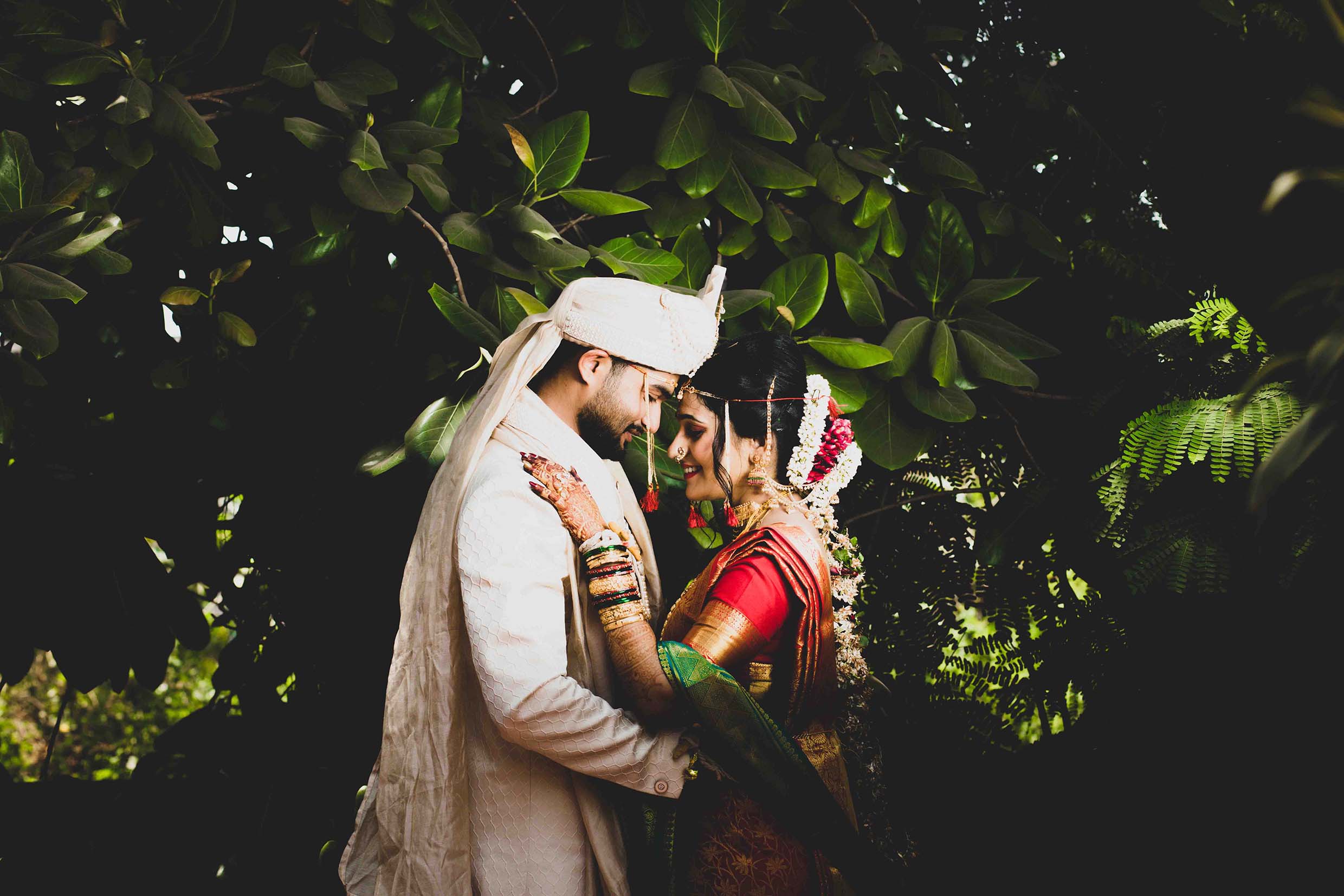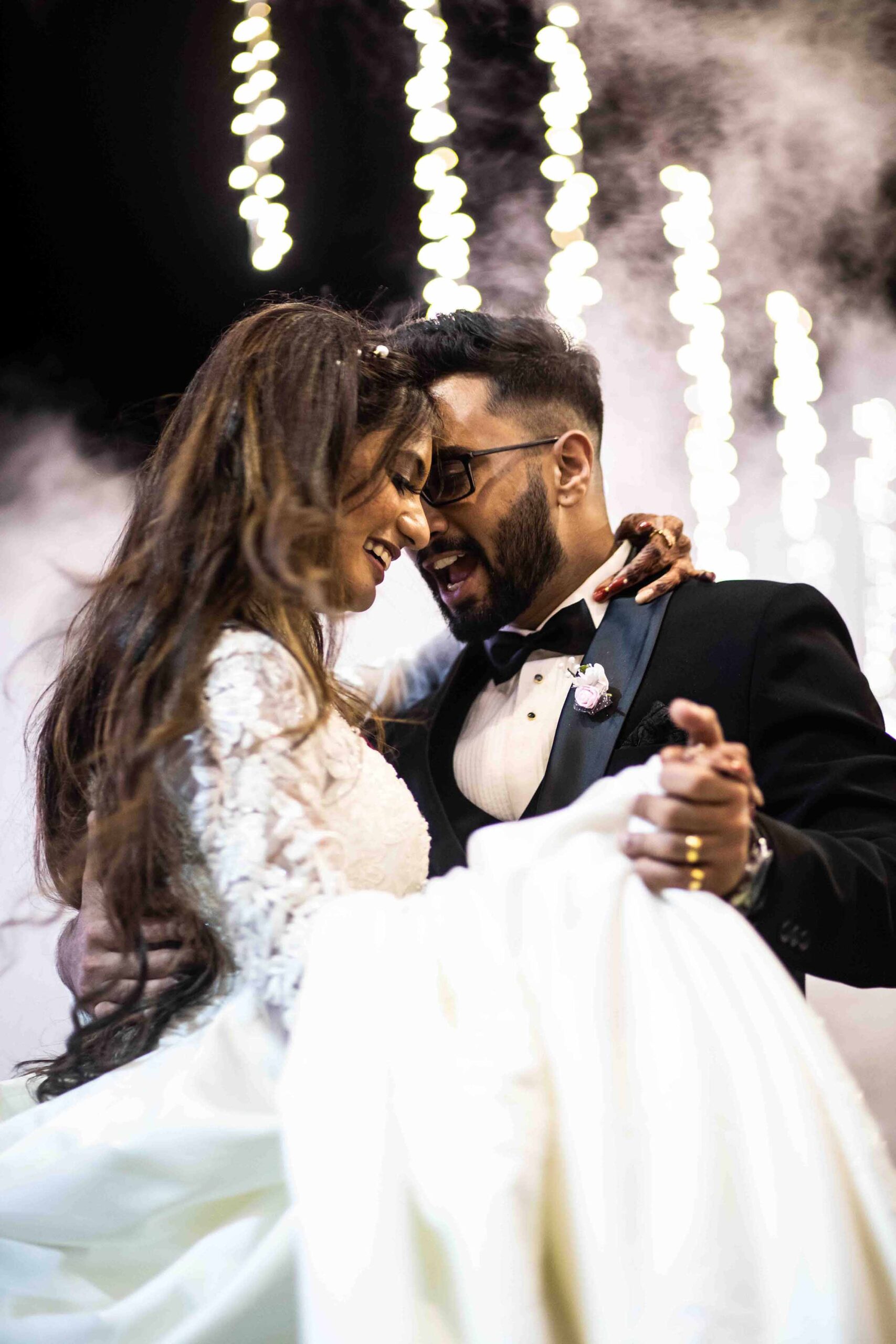wedding photography is an art form that captures the essence, emotions, and memorable moments of one of the most significant events in a person’s life: their wedding day. wedding photography A wedding is not only a celebration of love but also a series of moments that reflect the personalities of the couple, their families, and friends. wedding photography have the important job of documenting these moments in a way that tells a compelling visual story, preserving memories for the couple and their loved ones for generations.
This comprehensive explanation of wedding photography covers several aspects, including its history, the importance of the role of a wedding photography, technical skills and equipment, styles of wedding photography, tips for couples, and the editing process.
The Role and Importance of wedding photography
wedding photography is more than just snapping a few pictures at the ceremony. It involves the skillful capturing of hundreds or even thousands of moments throughout the entire day, starting from the preparation in the morning to the final celebration at night. wedding photography These photos serve as a lasting reminder of the couple’s special day, and they often become family heirlooms.
The importance of wedding photography lies in its ability to document the emotions, interactions, and the fleeting moments that may be forgotten over time. For many couples, their wedding album is the most valuable item they possess, containing memories that will be cherished for years to come.
The wedding photography role goes beyond just taking pictures; they must act as an observer, capturing moments without disrupting the flow of events. wedding photography They are also often tasked with organizing group portraits, ensuring that everyone looks their best while maintaining the authenticity of the moment.
History of wedding photography
wedding photography has evolved dramatically over the years. In the early days of wedding photography, weddings were captured using black and white film, often with very formal, posed portraits. These photographs were typically taken in studios, with the bride and groom carefully arranged for the picture.
As technology improved, wedding photography began to experiment with different techniques, such as color photography, and started to move away from the formal studio settings, capturing weddings in more natural environments. The introduction of digital wedding photography in the late 20th century further transformed wedding photography, allowing for more flexibility and creativity.
Today, wedding photography is a highly specialized field, with photographers offering various styles and services to meet the needs of modern couples.

The Technical Aspects of wedding photography
A successful wedding photography must have a strong understanding of both technical and artistic elements. Here are the key technical considerations:
- Equipment:
- Cameras: High-quality digital cameras are essential for wedding photography. Professional wedding photographers often use DSLR or mirrorless cameras, which provide flexibility in terms of lens choice, image quality, and low-light performance.
- Lenses: Different lenses serve different purposes. A standard zoom lens (24-70mm) is versatile and commonly used, while prime lenses (such as a 50mm f/1.4) are great for portraits, providing sharp images with beautiful background blur. A wide-angle lens (16-35mm) is perfect for capturing wide shots of venues or large groups.
- Flash and Lighting: Good lighting is crucial for wedding photography, especially in indoor or low-light settings. Photographers often use off-camera flash or continuous lighting equipment to illuminate their subjects while keeping the mood natural.
- Backup Gear: A wedding photographer must be prepared for any eventuality, so bringing backup equipment, such as spare cameras, lenses, and memory cards, is essential.
- Technical Skills:
- Exposure and Lighting: A wedding photography must understand how to work with natural light, especially in outdoor ceremonies. Balancing ambient light with artificial lighting (flash or strobes) is often necessary to get the best shots.
- Composition: wedding photography Composing an image properly ensures the photograph tells a story. The use of leading lines, the rule of thirds, and framing helps photographers create dynamic and engaging shots.
- Post-Processing: Editing is an essential part of wedding photography. After the event, photographers spend a significant amount of time processing their images, adjusting brightness, contrast, color balance, and removing distractions.
- Working Under Pressure:
- Weddings are fast-paced, and photographers need to be quick on their feet. The photographer must work discreetly to capture candid moments, while also staying organized enough to take group portraits and posed shots as required.
Different Styles of wedding photography
There are many different styles of wedding photography, each with its own unique approach to documenting the big day. Some of the most popular styles include:
- Traditional wedding photography:
- This style focuses on posed portraits, group shots, and formal documentation of key moments throughout the ceremony. Traditional photographers may direct the couple and guests to pose in specific ways, ensuring everyone looks their best.
- Photojournalistic wedding photography:
- This documentary style emphasizes capturing spontaneous moments, telling the story of the day as it unfolds. Photojournalistic photographers focus on candid shots, often without the couple or guests being aware that they are being photographed. This style creates a more relaxed and natural wedding album.
- Fine Art wedding photography:
- Fine art wedding photographers approach the day with an artistic mindset, focusing on creating visually stunning images with an emphasis on composition, light, and mood. The images tend to be more posed, but with an emphasis on creating an aesthetic that could be likened to fine art paintings or editorial photography.
- Editorial wedding photography:
- Similar to fine art photography, editorial wedding photography borrows from the world of fashion magazines. The couple is often posed in a stylized manner, and the photos resemble high-fashion editorial shoots, with an emphasis on glamour and design.
- Lifestyle wedding photography:
- This style blends aspects of photojournalism and fine art, with a focus on natural, yet composed shots. It emphasizes the couple’s personalities and the intimate, spontaneous moments shared with family and friends.
- Destination wedding photography:
- Destination weddings often involve a photographer traveling to an exotic or unique location to document the event. These weddings require an extra level of expertise in terms of location scouting, dealing with various lighting conditions, and capturing the beauty of the surroundings.
Planning for wedding photography
For couples, hiring the right wedding photography is crucial for ensuring that their memories are captured in the best way possible. Here are some factors to consider when planning for wedding photography:
- Finding the Right Photographer:
- Couples should start by researching photographers whose work they admire and who fit within their budget. wedding photography It’s important to check their portfolios and read reviews from past clients. A photographer’s style should align with the couple’s preferences, whether they prefer a more traditional approach or something more modern and candid.
- Pre-Wedding Consultation:
- Before the big day, couples should have a meeting with the photographer to discuss the schedule, specific shots they want, and any special requirements. wedding photography It’s also helpful to conduct an engagement photo session, which allows the photographer and couple to become familiar with each other before the wedding day.
- Timing:
- A wedding day is a busy event, and coordinating photography sessions requires careful planning. wedding photography The couple should create a timeline of the day, highlighting when to take portraits, group shots, and key moments, such as the ceremony, first dance, and cake cutting.
- Expectations:
- Couples should communicate any specific expectations, such as particular family members to include in photos or important cultural traditions to be documented. wedding photography This ensures that the photographer doesn’t miss any crucial moments.
- Bridal Party and Family Photos:
- Many couples choose to take formal portraits with the bridal party and family before or after the ceremony. wedding photography Organizing these photos efficiently can save time, ensuring that the couple can enjoy the reception without interruptions.
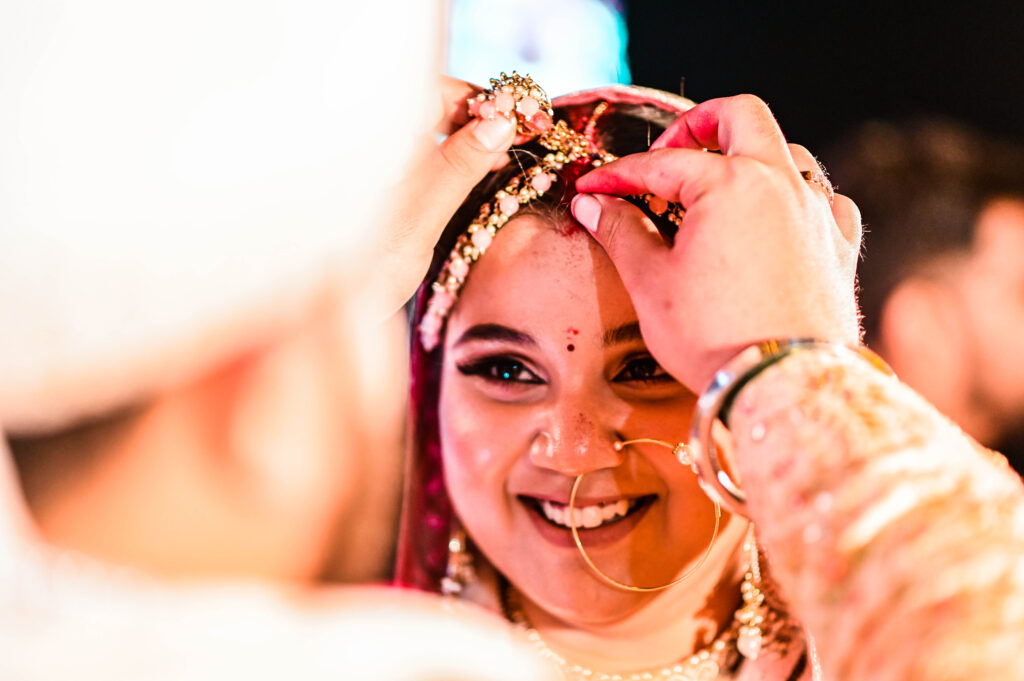
The Editing and Delivery Process wedding photography
Once the wedding is over, the wedding photography job is far from finished. Post-production is a crucial part of the wedding photography process.
- Culling:
- After the wedding, the wedding photography will go through all the images taken and select the best shots. This is a time-consuming process, as they must look for the images that are in focus, well-composed, and emotionally compelling.
- Editing:
- Once the best images have been selected, the wedding photography will edit each photo individually. wedding photography This involves color correction, exposure adjustments, retouching, and sometimes artistic enhancements. Editing can take anywhere from a few hours to several weeks, depending on the photographer’s workflow.
- Album Design and Printing:
- Many photographers offer wedding photography wedding albums as part of their services. These albums are carefully designed to tell the story of the wedding day, with each image arranged thoughtfully. The finished album is printed and bound to create a physical keepsake for the couple.
- Digital Delivery:
- In today’s digital age, many wedding photography provide couples with digital copies of their images. This may include high-resolution files for printing, as well as web-sized images that are optimized for sharing on social media.
Why the First Look is Worth the Investment wedding photography
There are several reasons why a first look can enhance your wedding day experience and the overall wedding photography package. Here are just a few:
1. Enhanced Photography Opportunities wedding photography
A first look gives wedding photography a chance to capture a wide variety of emotional moments and create a collection of images that tell a complete story. wedding photography From the first glance to the joyful embrace, the first look allows for a broader range of photos than the traditional ceremony-first look.
2. A Calm Start to the Day wedding photography
By having a first look before the ceremony, you can ease into the rest of the day. wedding photography The ceremony often feels like a whirlwind of emotions, and a private moment before it helps set a calm tone for the day.
3. More Time for Portraits wedding photography
After the first look, couples typically take some portraits before the ceremony, which gives more time for relaxed and creative shots. wedding photography The couple can enjoy their day knowing the more formal photos are already done.
Techniques for Capturing Love and Emotion wedding photography
To capture these emotional moments effectively, wedding photography use various techniques that help highlight the feeling and connection between the couple.
a. Focus on Expressions wedding photography
Expressions are the windows to emotions. wedding photography A photographer should focus on capturing facial expressions—smiles, tears, laughter, and looks of love. It’s these micro-expressions that convey the depth of emotion and connection.
b. Use of Light wedding photography
Lighting plays a critical role in setting the tone of the photo. wedding photography Soft, natural light can evoke warmth and intimacy, while dramatic lighting can add depth and emotion. wedding photography A skilled photographer knows how to use light to highlight the emotional essence of the moment.
c. Composition wedding photography
The way the wedding photography frames a shot can emphasize the emotion. For example, a close-up shot of the couple holding hands or a wide shot of the couple surrounded by their loved ones can capture the feelings of love and togetherness. wedding photography Using the right composition can draw the viewer’s attention to the emotional focal point of the image.
d. Timing wedding photography
Timing is key in wedding photography. Capturing the perfect moment often requires the photographer to be quick and perceptive. Whether it’s the blink of an eye, a heartfelt kiss, or a fleeting smile, the wedding photography must be ready to capture the emotion as it happens.
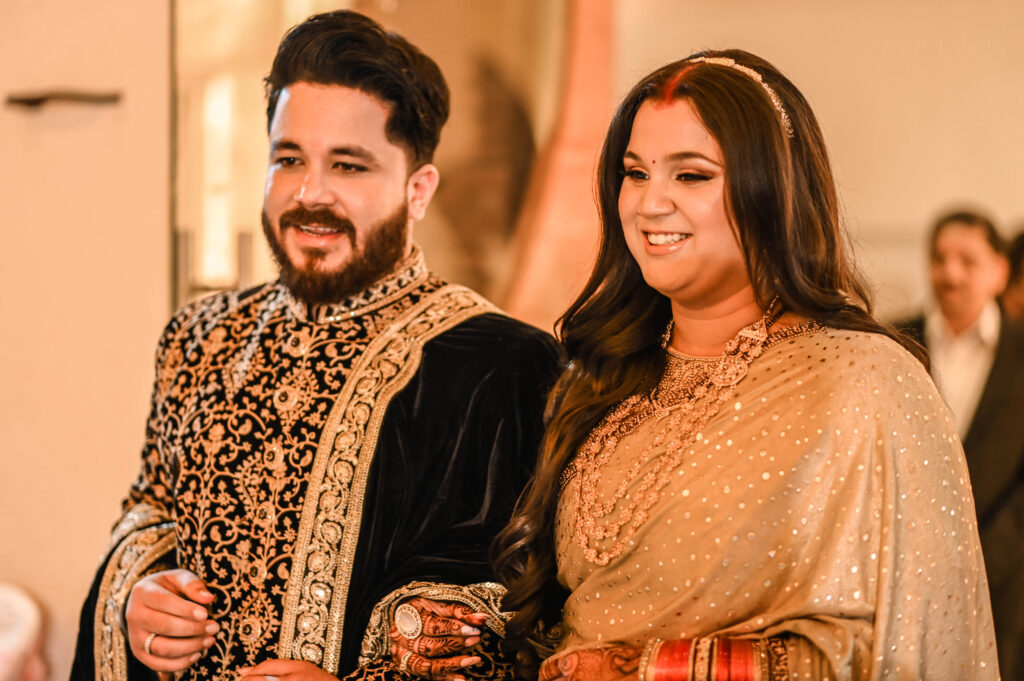
Techniques for Capturing Love and Emotion wedding photography
wedding photography To capture these emotional moments effectively, photographers use various techniques that help highlight the feeling and connection between the couple.
a. Focus on Expressions wedding photography
Expressions are the windows to emotions. wedding photography A photographer should focus on capturing facial expressions—smiles, tears, laughter, and looks of love. wedding photography It’s these micro-expressions that convey the depth of emotion and connection.
b. Use of Light wedding photography
wedding photography Lighting plays a critical role in setting the tone of the photo. Soft, natural light can evoke warmth and intimacy, while dramatic lighting can add depth and emotion. wedding photography A skilled photographer knows how to use light to highlight the emotional essence of the moment.
c. Composition wedding photography
The way the wedding photography frames a shot can emphasize the emotion. For example, a close-up shot of the couple holding hands or a wide shot of the couple surrounded by their loved ones can capture the feelings of love and togetherness. wedding photography Using the right composition can draw the viewer’s attention to the emotional focal point of the image.
d. Timing wedding photography
Timing is key in wedding photography. Capturing the perfect moment often requires the photographer to be quick and perceptive. wedding photography Whether it’s the blink of an eye, a heartfelt kiss, or a fleeting smile, the photographer must be ready to capture the emotion as it happens.
Styles of wedding photography
There are various styles of wedding photography, and each photographer may specialize in one or combine multiple styles. Understanding these styles helps couples choose a wedding photography who can best capture their wedding vision.
- Traditional (Classic) Wedding Photography: Traditional wedding photography focuses on posed shots, often with formal, structured compositions. wedding photography This style typically involves capturing key moments like the couple walking down the aisle, the exchange of rings, family group shots, and staged bridal portraits. This style is timeless, offering elegant and polished images.
- Photojournalistic Wedding Photography: wedding photography In contrast to the traditional approach, photojournalistic wedding photography emphasizes candid shots. The photographer captures the day as it unfolds, documenting moments without directing or interfering. The aim is to capture raw, authentic emotions and the story of the day. Photojournalism offers a more documentary-style approach, where the couple and their guests are captured in unposed moments.
- Fine Art Wedding Photography: Fine art wedding photography takes a more creative, artistic approach to capturing the wedding day. Photographers who specialize in this style often focus on composition, lighting, and mood to create visually stunning and artistic images. They may use special techniques like film photography or experimental editing to achieve a unique look.
- Contemporary Wedding Photography: Contemporary wedding photography blends traditional and modern approaches. Photographers might incorporate elements of fine art or photojournalism but with a more modern aesthetic. This style often includes creative poses, unique angles, and more experimental editing techniques.
- Destination Wedding Photography: Destination wedding photography is a niche within the wedding photography industry, focusing on weddings that take place in exotic or remote locations. Photographers in this field must be skilled at adapting to new environments, understanding cultural nuances, and working with natural light.
Skills Required for wedding photography
wedding photography is a complex field that requires a wide range of skills. wedding photography Photographers must possess both technical expertise and the ability to connect with clients emotionally. Some of the key skills required include:
- Technical Proficiency: wedding photography need to be experts in their equipment. They must understand how to use cameras, lenses, lighting, and other gear to capture high-quality images in a variety of settings and lighting conditions. wedding photography This includes understanding exposure settings, white balance, and depth of field.
- Attention to Detail: Weddings are full of small details that make the day unique. wedding photography A photographer must have a keen eye for detail to capture these elements, such as the intricate design of the wedding cake, the bride’s shoes, or the couple’s wedding rings.
- People Skills: A wedding photography spends the entire day interacting with the couple, their families, and guests. Building rapport with people is crucial, as it helps create a comfortable environment and ensures the photographer can capture candid and natural moments.
- Creativity: wedding photography is an art, and creativity plays a huge role. A photographer must be able to see ordinary moments and transform them into extraordinary photographs. Whether through creative posing, unique angles, or imaginative compositions, creativity is essential for producing standout images.
- Time Management: wedding photography are fast-paced, and there’s often a lot of pressure to capture specific moments at the right time. A photographer must be able to manage their time effectively to ensure they don’t miss key moments while also maintaining a relaxed atmosphere.
- Post-Processing and Editing: wedding photography After the wedding, photographers spend considerable time editing photos to perfect the colors, exposure, and overall look of the images. Proficiency in editing software such as Adobe Lightroom and Photoshop is essential for producing high-quality, polished images.
Challenges in wedding photography
While wedding photography can be incredibly rewarding, it comes with its fair share of challenges. Here are some of the common difficulties faced by wedding photography:
- Unpredictable Weather: wedding photography Outdoor weddings can be a gamble when it comes to weather. Photographers must always be prepared for rain, wind, or intense sunlight, which can affect the quality of the photos. A skilled wedding photographer must be able to adapt to various weather conditions and still deliver great results.
- Long Working Hours: wedding photography often requires photographers to work long hours. A wedding day can span from early morning preparations to late-night dancing and celebrations. This can be exhausting, both physically and mentally, especially when photographers are expected to stay focused and creative throughout the day.
- Client Expectations: wedding photography clients often have high expectations for their wedding photos. They may have a specific vision in mind, and meeting those expectations can be stressful for photographers. Communicating clearly with clients before the wedding is essential to understanding their needs.
- Handling Multiple Tasks: A wedding photography is often responsible for a multitude of tasks on the day of the event, including directing group photos, setting up lighting, and ensuring that they don’t miss important moments. This multitasking requires excellent organizational skills.
- Emotional Pressure: wedding photography are capturing one of the most important days in a couple’s life, and there is immense pressure to get everything right. Mistakes are not easily forgiven, as the couple will cherish these photos for years. Managing that pressure is essential to delivering high-quality work.
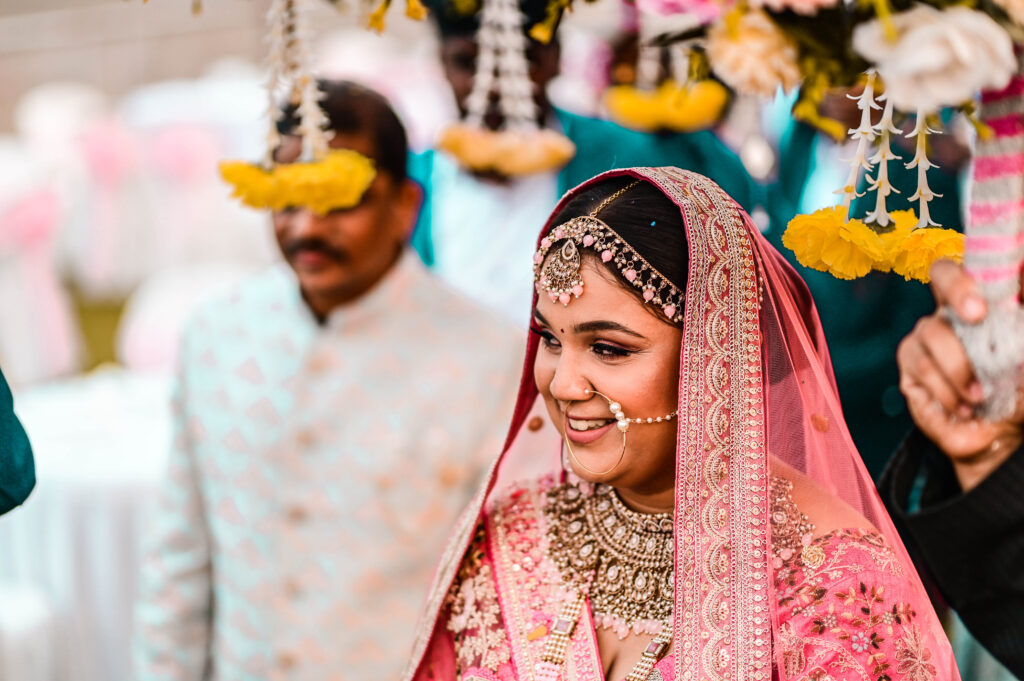
1. Choose the Right wedding photography
The foundation of great wedding photography begins with selecting the right photographer. The best photographers are not just technical experts—they are storytellers who understand how to capture the unique moments of a wedding day. When searching for a wedding photography, consider the following:
a. Review Their Portfolio wedding photography
The first step in finding a great wedding photography is to review their portfolio. Look for a style that resonates with you, whether it’s photojournalistic, fine art, traditional, or a blend of styles. wedding photography Pay attention to how the photographer handles lighting, composition, and storytelling. Make sure the portfolio reflects consistency in quality and style.
b. Personality and Compatibility wedding photography
Your wedding photography will be with you throughout your day, often in close proximity during intimate moments. It’s essential to hire someone whose personality meshes well with yours. wedding photography A photographer who is approachable, friendly, and confident will make you feel more comfortable, which results in more natural, genuine moments being captured.
c. Experience with Weddings wedding photography
Choosing a photographer who has experience in wedding photography is crucial. Weddings are dynamic events with lots of moving parts, wedding photography so an experienced wedding photography will be able to adapt to different scenarios (e.g., changing lighting, unpredictable weather, large groups of guests). They will know how to direct group shots while still capturing candid moments.
2. Pre-Wedding Planning wedding photography
To ensure a seamless and stress-free wedding photography experience on the wedding day, thorough planning before the event is essential. Here are the best ways to prepare:
a. Discuss Your Vision wedding photography
Before the wedding, meet with your wedding photography to discuss your vision. wedding photography This includes the style of photos you want, any special moments you want to capture, and the overall mood of the day. Are you more inclined toward candid shots or formal portraits? Would you like your photos to feel relaxed and spontaneous, or do you want a more polished, posed look?
b. Create a Shot List wedding photography
While a good wedding photography will be able to anticipate key moments, it’s always helpful to create a shot list. This list should include must-have images, such as the bride and groom walking down the aisle, the first kiss, wedding photography first dance, group photos with family members, and any special details like the rings, invitations, and wedding attire.
c. Scout the Locations wedding photography
If possible, visit your wedding venue with your wedding photography before the big day. This allows them to get a sense of the lighting, the layout, and any potential challenges. wedding photography If you’re getting married outdoors, the wedding photography can scout the area for beautiful backdrops and ensure they’re prepared for changes in lighting or weather.
d. Discuss the Timeline wedding photography
A well-organized wedding day schedule is essential for smooth wedding photography. Discuss the wedding day timeline with your photographer to ensure there’s enough time for key moments, including pre-wedding shots, the ceremony, wedding photography family portraits, and the reception. Make sure to build in some buffer time in case things run late.
3. Capturing Key Moments with Authenticity wedding photography
wedding photography On the wedding day, the photographer’s role is to capture the significant moments, emotions, and memories as they unfold naturally. Here are some of the most important moments to focus on:
a. Pre-Ceremony Shots wedding photography
The best wedding photography wedding photos often begin long before the ceremony. Capture candid moments of the bride and groom getting ready, surrounded by their closest family and friends. wedding photography This includes shots of the bride putting on her dress, the groom adjusting his tie, and the anticipation in the air. These moments help set the stage for the day’s emotions.
b. The First Look wedding photography
For many couples, the first look is one of the most emotional moments of the day. wedding photography Whether you choose to see each other before the ceremony or wait until the walk down the aisle, this moment should be captured in a way that reflects the couple’s emotion. wedding photography The photographer should focus on the expressions and the intimate connection shared between the couple.
c. Ceremony Highlights wedding photography
The ceremony itself is filled with key moments: walking down the aisle, the exchange of vows and rings, the first kiss, and the newlyweds’ first steps as a married couple. wedding photography These are the moments that define the wedding and should be captured with attention to detail. wedding photography The wedding photography should aim to capture the couple’s emotions during these pivotal moments, as well as the reactions of guests.
d. Candid Shots of Guests wedding photography
Some of the best wedding photos come from candid moments. wedding photography Capturing the reactions of guests as they laugh, cry, or celebrate adds authenticity to the wedding album. Photographers should stay observant, ready to capture moments of joy, surprise, and emotion.
e. Group Photos wedding photography
Family portraits are an essential part of wedding photography. However, they don’t have to be stiff or overly posed. While it’s important to get the classic group shots, wedding photography great photographers will know how to make family photos feel natural. wedding photography Ensure that you’ve prepared a list of key people for these shots so that they can be done quickly and efficiently.
f. The Reception: Dancing and Celebration wedding photography
The reception is a time to let loose, celebrate, and have fun. wedding photography The best way to capture this is by focusing on the energy of the moment. wedding photography The couple’s first dance, the speeches, and spontaneous dancing provide fantastic opportunities for candid, emotional shots. Photographers should also focus on small, intimate moments during the reception, wedding photography like guests sharing a laugh or a heartfelt moment with the couple.
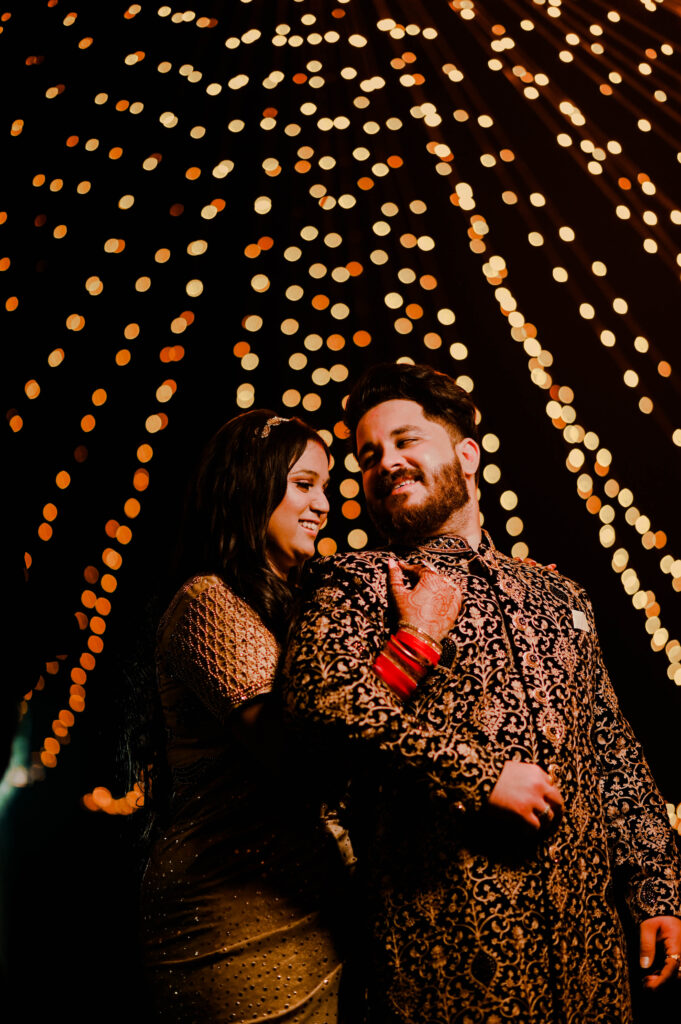
4. Emphasizing the Details wedding photography
wedding photography Weddings are full of beautiful details, and a great photographer knows how to highlight these. wedding photography Focus on capturing the little things that make the wedding unique, such as:
- The bride’s dress, shoes, and accessories
- The wedding rings
- The floral arrangements and bouquets
- The table settings and decorations
- The cake and dessert table
- Personalized elements (e.g., handwritten vows, signage)
These details add layers to the wedding story and create a comprehensive visual narrative of the day. Taking time to photograph these moments ensures that every aspect of the celebration is remembered.
5. Post-Wedding Editing and Delivery wedding photography
After the wedding, the wedding photography work isn’t over. The post-production phase is where the raw images are refined to create the final product. wedding photography The best way to approach editing and delivery is:
a. Editing with Care wedding photography
The editing process is crucial for enhancing the photos while keeping them true to the couple’s vision. Skilled photographers will adjust exposure, color balance, and lighting to create images that feel natural but polished. Many photographers also offer black-and-white versions of select photos for a timeless touch.
b. Timely Delivery wedding photography
Couples are eager to see their wedding photos, so timely delivery is essential. wedding photography Depending on the package, wedding photography may provide a digital gallery within a few weeks to a couple of months. Some photographers also offer beautifully crafted wedding albums, which can serve as a physical representation of the couple’s special day.
c. The Wedding Album wedding photography
In addition to digital galleries, many couples choose to invest in a wedding album that showcases the best photos from the day. wedding photography A high-quality, professionally designed album is a beautiful way to relive the wedding day and share the memories with future generations.
6. Tips for Couples to Get the Best Photos wedding photography
While the wedding photography plays the key role in capturing great wedding photos, couples can also take steps to ensure the best results:
- Be Relaxed and Natural: wedding photography The more relaxed you are, the more natural and authentic your photos will be. Trust your photographer and enjoy the moments as they come.
- Communicate Your Preferences: wedding photography If you have specific ideas for your wedding photos, communicate these with your photographer. Share any inspiration you have, but also be open to their creative suggestions.
- Be Prepared for Group Photos: wedding photography Organize your family and bridal party for group shots, so you don’t waste time during the session. Ensure everyone is present and ready.
- Take Care of Your Appearance: While your photographer will do their best to capture the beauty of the day, paying attention to your attire, hair, and makeup can help you look your best in photos.

Conclusion wedding photography
wedding photography The first look is a deeply personal and emotional moment that allows couples to connect and share a private exchange before the whirlwind of the wedding photography wedding ceremony. wedding photography With the right planning, location, and photographer, the first look can be one of the most memorable moments of the entire day. Whether you choose to have a traditional first look or a private moment before the ceremony, the beauty of this experience lies in the emotion, connection, and joy it brings. wedding photography A skilled photographer can help you preserve this intimate moment forever, ensuring that your wedding photography wedding memories remain as vivid and beautiful as the emotions you experienced.
wedding photography is a complex and rewarding field that combines technical skill with artistic vision. It requires a deep understanding of both the technical aspects of wedding photography and the emotional significance of the moments being captured. wedding photography From the early morning preparations to the late-night celebrations, a wedding photography has the important job of preserving the memories of the day in a way that reflects the personalities and love of the couple.
As technology and trends evolve, wedding photography continue to push creative boundaries, offering couples new and innovative ways to capture the most important day of their lives. Whether a couple desires a traditional, posed approach or a more modern, candid style, wedding photography has something for everyone. The photos not only document the events of the day but also become cherished mementos that the couple will look back on for years to come.

